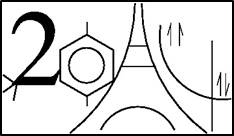Single-molecule force-spectroscopies are remarkable tools for studying protein folding and unfolding. However it is legitimate to wonder whether the explored pathways differ or not from that traditionally explored via chemical or thermal denaturation, especially because the experimental reaction coordinates are very different. Here we address the following questions: how well do proteins that are very stable upon thermal denaturation resist under force? Are the same mechanisms involved for both types of stability?
Our paradigm system is a small, ~70-residue protein, cold-shock, that is present in thermophilic organisms and that has a very high melting temperature. We compare it to one of its mesophilic counterpart, which is not stable at high temperatures. Both thermal and mechanical stabilities are investigated with all-atom molecular dynamics simulations in explicit solvent.
To verify the ability of our models to reproduce the experimental shift in the melting temperature of both protein homologues, we have implemented an enhanced-sampling algorithm (REST2) based on an Hamiltonian exchange scheme, into a publicly available simulation code (NAMD2). This allows us to explore the proteins' free-energy landscape over a wide range of temperature much faster than would be obtained using unperturbed simulations. We can therefore gain access to key information concerning the protein thermal folding and unfolding pathways and the associated mechanisms.
The proteins mechanical stability is investigated using constant-force steered molecular-dynamics. In agreement with experimental data, we find that the typical unfolding force of the both variants are non-negligible but significantly lower than that of well-characterized mechanically stable proteins. Our results suggest that thermal stability does not guarantee a mechanical one (whereas the opposite seems to be true, i.e., proteins that are very stable upon force are also thermostable) and that the associated mechanisms, of which our simulations provide extensive details, are very different in nature.

 PDF version
PDF version
